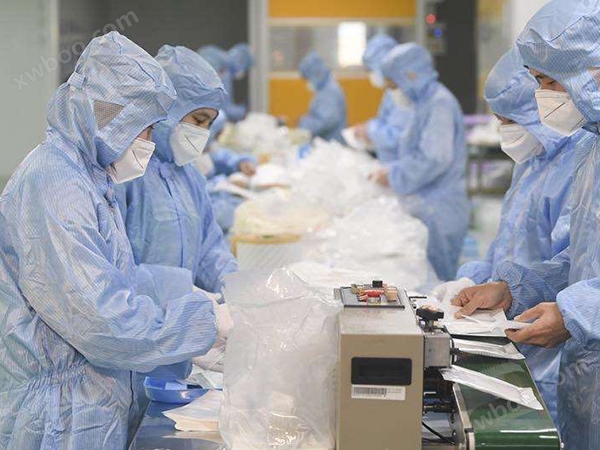Production process of disposable medical masks:
1. Selecting raw materials: Choose an appropriate amount of PP non-woven fabric, nose bridge strips, silk threads, antibacterial filter paper, activated carbon cloth, waterproof breathable film, non-woven edge wrapping material, and ear straps.
2. Production: PP non-woven fabric raw materials, antibacterial filter paper, activated carbon cloth, and waterproof breathable film are all hung on the mask laminating machine rack, and the machine is debugged for automatic production.
3. Welding molding: Place the nose bridge strip above the mask sheet, then fold and wrap the mask sheet around the nose bridge strip.
4. Internal packaging workshop: Sterilize and disinfect formed masks, and vacuum package them.
5. Outsourced shipment: Integrate packaged masks into external packaging for shipment.
Production process of medical cup type protective mask:
Selecting raw materials, hot pressing, shaping, manufacturing, welding, trimming, printing, mask labeling, breathing valve punching, nose bridge welding, manual/machine pasting, inner nose bridge welding, ear strap welding, breathing valve finished product, inner packaging, workshop, external integration, packaging, storage/shipment
Production environment and requirements for disposable medical masks:
Friends who are familiar with the classification of medical devices should know that medical devices are divided into three categories, and masks belong to the second category of medical devices. Whether it is medical cup type protective masks or disposable medical masks, the production environment must be in a cleanroom of 100000 level (medical: D-level cleanroom) or above. This is a mandatory requirement of the country, and the production environment must be dust-free and sterile. Masks with special requirements must be produced within a specified temperature and humidity range.
Logistics aspects of cleanroom:
From the initial selection of raw materials to the final formation of the inner packaging, the entire process must be dust-free and sterile. The workshop layout should be reasonable, emphasizing smooth process flow, smooth connection between upper and lower processes, short and straight transportation distance, and avoiding detours and back and forth transportation as much as possible.
Regarding personnel entering and exiting the dust-free workshop:
All clean rooms in the dressing, hand washing, disinfection/buffering, air shower disinfection and clean corridors must be dust-free.
Analysis period after disinfection and sterilization of disposable medical masks:
After production, medical masks are usually disinfected using ethylene oxide sterilization. After sterilization, there will be residual ethylene oxide on the mask, which is a toxic carcinogen. Long term inhalation of ethylene oxide not only irritates the respiratory tract, but also has a strong carcinogenic possibility. Long term exposure to small amounts can lead to symptoms of neurasthenia syndrome and autonomic nervous system dysfunction.
So it is necessary to release the residual ethylene oxide on the mask through analysis in order to meet the safety content standard. Therefore, medical masks sterilized with ethylene oxide must undergo analysis and pass testing before they can be released for sale.
The post sterilization analysis period is currently usually 14 days. This is a relatively safe ethylene oxide decomposition time verified by the enterprise, which can ensure that the residual ethylene oxide content in masks is below the safety standard of 10ug/g. At the same time, the colder the weather, the harder it is for ethylene oxide to decompose.






